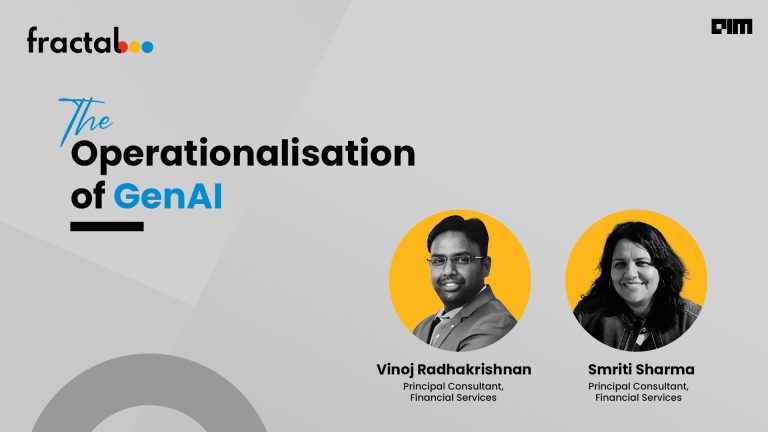|
Listen to this story
|
Back in October 2023, Samsung-owned HARMAN entered the generative AI race in the healthcare space with HealthGPT – a private LLM built on TII’s open-source model Falcon 7B. The latest version, HealthGPT Chat, is built on Llama 2.
Healthcare is one of the most inherently complicated fields for generative AI to be harnessed given the vast amount of unstructured and sensitive data.
“The primary motivation behind developing a private LLM like HealthGPT stems from enterprises’ concerns about data privacy and security. This issue arises particularly when using public LLMs, as they require transferring sensitive data to external entities, leading to potential uncertainties regarding how this data might be used,” Dr Jai Ganesh, chief product officer, told AIM, in an exclusive interaction.
Ganesh further explained that another challenge with public models is their structural limitations, such as token restrictions and a lack of control over the entire processing chain. This lack of control can be detrimental, as any issues with public models can directly impact business performance.
Understanding the severity of these issues, HARMAN entered the space of private models, coinciding with the open-sourcing moment of several foundational models around late February last year. It was around the same time when Meta’s LLaMA 1 was leaked online. Following this, models like Falcon 7B by TII and Llama 2 were released. However, the company chose to tap into the potential of open-source models instead of building an LLM in-house.
“We chose not to develop a foundational model ourselves due to the immense cost and resource investment required—estimated to be around $30 to $40 million. Instead, we focused on utilising existing open-source foundation models,” he commented.
Dearth of Data
“We identified healthcare as the most relevant domain for our model due to the sector’s inefficiencies, the vast amount of unstructured data, and the challenges decision-makers face in deriving insights from this data,” said Ganesh.
So given the scarcity of training data, the team found a rich source of such publicly reported data in clinical trial studies related to cancer, immune diseases, and heart diseases, leveraging this data to train HealthGPT.
However, the problem is not confined to the amount of data available, but also its poor quality. Models trained on skewed datasets can lead to biased outcomes. “We have mechanisms in place to identify and correct bias in the data. This is not limited to the data preparation stage; the output is also scrutinised for bias,” he added.
Rigorous testing frameworks, involving extensive querying, are integral to maintaining the integrity and privacy of processed data.
Tackling Hallucination Responsibly
It is not new that LLMs are prone to spewing wrong information. But in critical areas like life science, where accuracy and reliability of diagnosis, such hallucinations can cost you serious threats. To overcome these risks, HARMAN uses a combination of automated mechanisms and human-in-loop intervention.
HARMAN has a multifaceted approach to managing hallucinations. Firstly, HealthGPT employs guardrails to regulate the level of hallucination. “Initially, the accuracy of the models was around 74%, but with continuous refinement, it has improved significantly, reaching over 85-90%,” said Ganesh.
Secondly, the model’s interface provides control over settings like temperature and token number, allowing users to check the extent of hallucinatory outputs. Higher temperatures increase hallucination, while lower settings reduce it. Thirdly, human oversight is involved with the medical doctor of the team validating AI-generated results. This is supplemented by a feedback mechanism for a continuous loop of user input that helps in refining the model. Furthermore, RAG feature adds references to answers for better information credibility. Finally, the system includes a benchmarking section that compares the model’s performance with other studies and models.
However, responsible AI is at the heart of HealthGPT’s success. “One of the reasons why we chose to go for private LLM is because it ensures end-user control. Unlike models hosted on unknown cloud instances, HealthGPT model operates within the user’s own Virtual Private Cloud (VPC) and cloud environment,” explained Ganesh, emphasising how the approach improves security and privacy as the model is fine-tuned on the user’s data within their controlled environment.
Pre-fine-tuning checks are also implemented to detect anomalies, with a focus on privacy through automated mechanisms for handling Personally Identifiable Information (PII) and Protected Health Information (PHI).
Harman’s approach in the healthcare domain, as well as others, is characterised by a human-centric philosophy. This approach involves understanding problems holistically and placing the human, or decision-maker, at the center of solutions. This philosophy is fundamental to Harman’s interactions with its global customer base, which varies from companies in the proof-of-concept (POC) stage to those in more advanced stages of implementation.
What Next
Although not yet deployed for live customers, HealthGPT has found compelling proof-of-concept (POC) stories showcasing its potential applications in diverse domains. One POC demonstrates the use of HealthGPT for personalised data analysis across sectors, allowing customisation for individual needs, such as drug discovery in pharmaceuticals.
Another story involves using the model for extracting insights from medical instrument data, emphasising its capacity to handle large-scale, structured information. A third user story features a pharmaceutical company leveraging the model to bolster drug discovery by integrating clinical trial data and information from sources like PubMed. IQVIA, Roche, Aetrex are among the major clients that HARMAN serves.
“Currently, we are experimenting Mistral AI’s Mixtral 7B for future iterations. The aim is to constantly push the boundaries of auto foundation models,” said Ganesh.
The company’s generative AI strategy involves integrating more diverse data sources with a focus on ensuring data quality and compliance with regulations like HIPAA. This necessitates extensive training for developers handling healthcare data. Alongside this, Ganesh and his team are working towards introducing multimodal features.
But no matter how strong the generative AI product it comes up with, HARMAN’s strategy will always be characterised by a human-centric philosophy. This approach involves understanding problems holistically and placing the human, or decision-maker, at the center of solutions.
Moreover, there are plans in place to expand HealthGPT beyond healthcare into domains like manufacturing and IT management, the other core focus areas of HARMAN, aligning with HARMAN’s strategic plans.
































